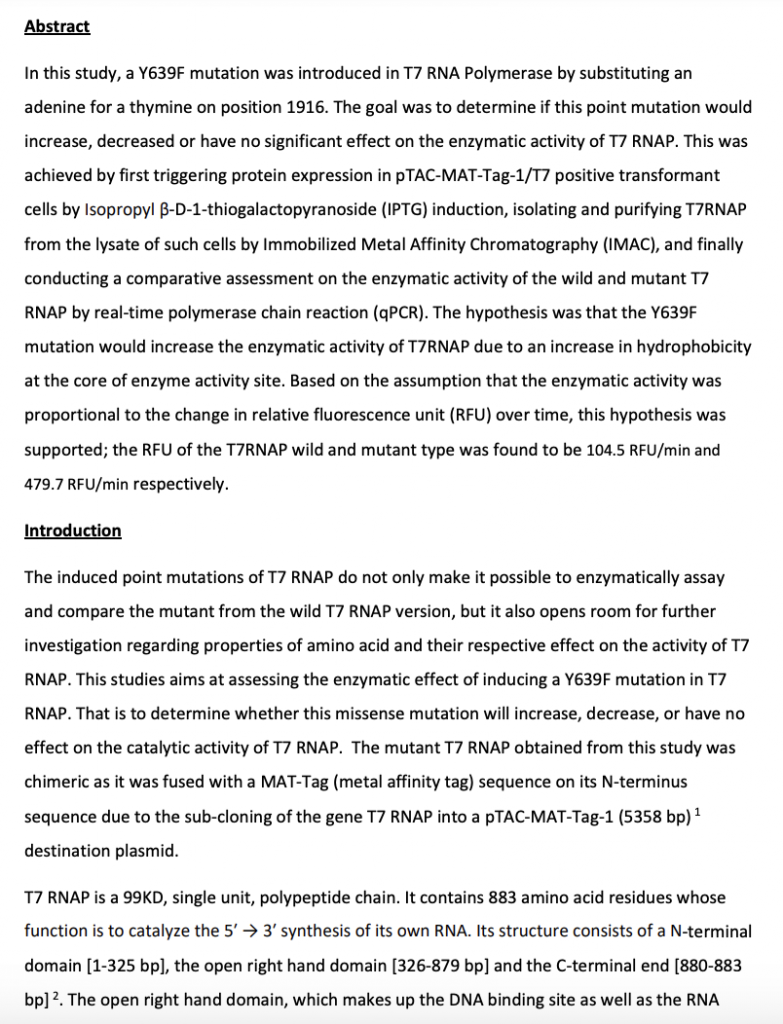BCH 3356 BCH 3756 Molecular Biology (Grade A)
Summary:
This study, a Y639F mutation was introduced in T7 RNA Polymerase by substituting an adenine for thymine on position 1916. The goal was to determine if this point mutation would increase, decrease or have no significant effect on the enzymatic activity of T7 RNAP. This was achieved by first triggering protein expression in pTAC-MAT-Tag-1/T7 positive transformant cells by Isopropyl β-D-1-thiogalactopyranoside (IPTG) induction, isolating and purifying T7RNAP from the lysate of such cells by Immobilized Metal Affinity Chromatography (IMAC), and finally conducting a comparative assessment on the enzymatic activity of the wild and mutant T7 RNAP by real-time polymerase chain reaction (qPCR). The hypothesis was that the Y639F mutation would increase the enzymatic activity of T7RNAP due to an increase in hydrophobicity at the core of the enzyme activity site. Based on the assumption that the enzymatic activity was proportional to the change in relative fluorescence unit (RFU) over time, this hypothesis was supported; the RFU of the T7RNAP wild and mutant type was found to be 104.5 RFU/min and 479.7 RFU/min respectively.
Excerpt:
BCH 3356 BCH 3756 Molecular Biology
Laboratory BCH3756
Using Western Blot to Enzymatically Assay a Y639F Mutant T7 RNA Polymerase Translated
from a pTAC-MAT-Tag-1/T7 Recombinant Plasmid
Matthew Eason
Abstract
This study, a Y639F mutation was introduced in T7 RNA Polymerase by substituting an adenine for thymine on position 1916. The goal was to determine if this point mutation would increase, decrease or have no significant effect on the enzymatic activity of T7 RNAP. This was achieved by first triggering protein expression in pTAC-MAT-Tag-1/T7 positive transformant cells by Isopropyl β-D-1-thiogalactopyranoside (IPTG) induction, isolating and purifying T7RNAP from the lysate of such cells by Immobilized Metal Affinity Chromatography (IMAC), and finally conducting a comparative assessment on the enzymatic activity of the wild and mutant T7 RNAP by real-time polymerase chain reaction (qPCR). The hypothesis was that the Y639F mutation would increase the enzymatic activity of T7RNAP due to an increase in hydrophobicity at the core of the enzyme activity site.


Reviews